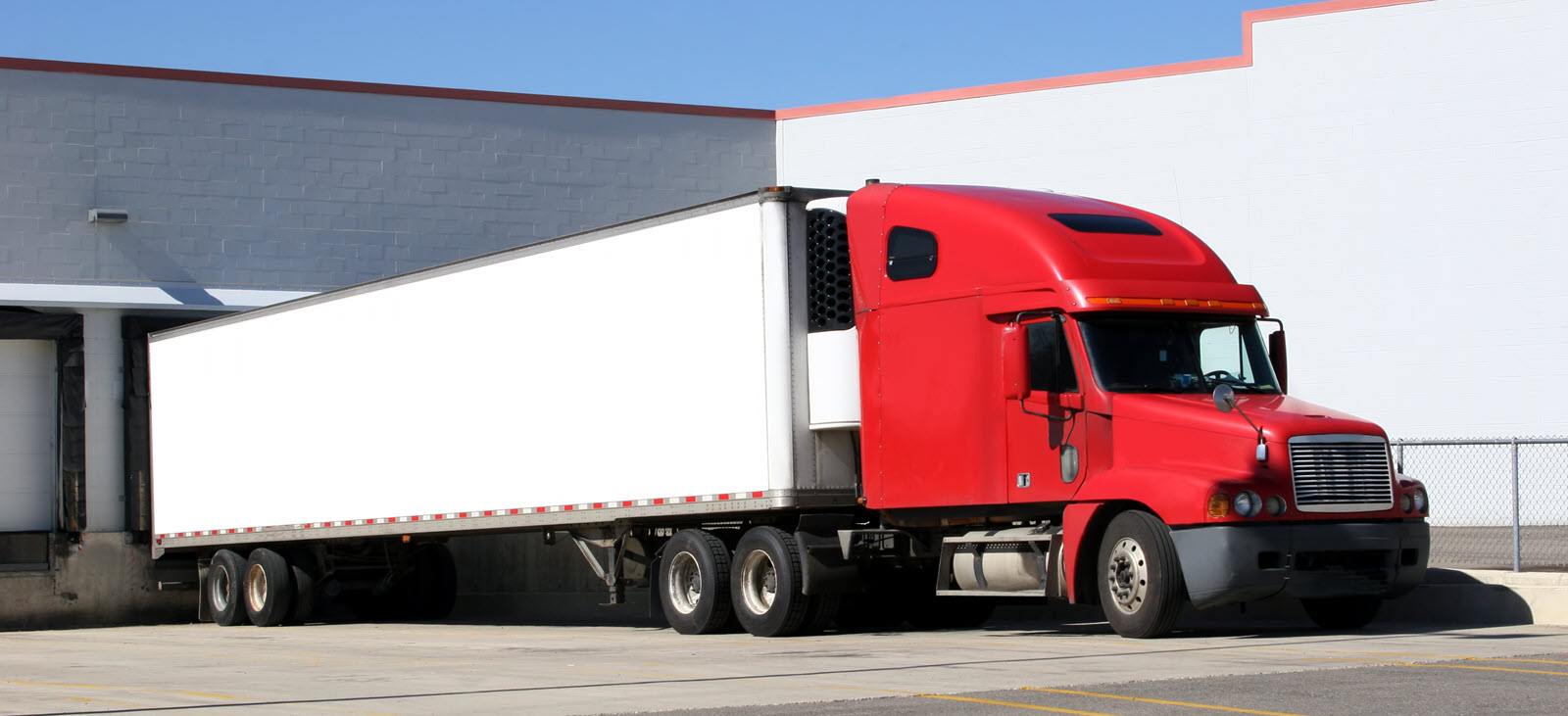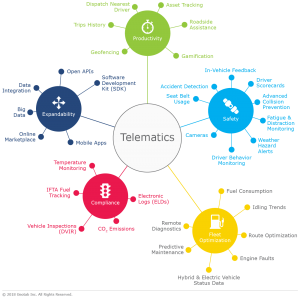1. Do you manage a small or large fleet of vehicles that are critical to your business operation?
2. Do you have the necessary data to manage your fleets utilization, preventative maintenance, driver behaviors and route optimization?
If you answered YES to question 1 and NO to question 2 you should consider a implementing a telematics solution.
Telematics Overview
Telematics is the monitoring of location, movements, status, and behavior of a vehicle/driver. This is achieved by installing a GPS communications device in the vehicle that sends vehicle data and engine diagnostics to the dispatcher and/or Fleet Manager.
Robust telematics solutions can offer the following capabilities and more:
• Vehicle Tracking – Ability to view location of vehicles
• GEO Fences – Ability to set virtual fences around company yards or drop sites. When a geo fence is penetrated the vehicle sends a notification to configurable individuals. This functionality serves as theft control or provides live alerts when vehicle is close to home base or at a customer site.
• Driver Behavior – Monitors safety events such as speeding, hard braking, rapid acceleration
• Idle Time Monitoring – Tracks vehicle idle events and alerts interested parties. Truck idling poses an enormous fuel cost for companies managing large fleets.
• Preventative Maintenance– Actively monitors vehicle diagnostics i.e. oil pressure and transmits alerts when readings are out of specification.
• Electronic Logs – Eliminates manual paper based logs. When driver logs into the vehicle, the driver status is tracked based on the motion of the vehicle until the driver logs out. Regulators and Managers like e-logs as they are far more accurate than paper based logs and far more efficient.
• Electronic Vehicle Inspection – Mobile application that walks the driver through an inspection checklist for pre and post drive inspections.
Business Case for Telematics
I implemented a telematics solutions where the cost of implementation was funded solely with savings from idle time reduction. Drivers often leave vehicles running during the loading and unloading process. With the implementation of telematics, Managers receive active alerts for excessive idling events and are able to educate drivers and adjust idling behavior. One hour of idle time consumes 1 gallon of diesel fuel making the cost of a telematics implementation easy to justify and the benefits easy to communicate.
While idle time reduction provides tangible green dollar benefit, the real value of telematics comes from increased driver safety. Telematics provides the ability to detect unsafe driver behaviors such as speeding and hard braking. Armed with data, Managers can correct behaviors prior to the occurrence of traffic incidents. A single traffic incident can result in enormous financial liability not to mention the physical impact to those involved. That being said, any technology that can prevent such an incident is well worth the cost of implementation.
Summary
Telematics solutions offer a wide range of benefits from driver tracking to reduced idle time. These programs may have a tremendous ROI depending on the issues you are looking to address. Feel free to contact me if you are considering implementing a telematics solution and/or have any questions regarding implementation challenges.
Sean Breeze, Management Consulting Director
Cell: 303-916-7503 | NASDAQ: PRFT | Perficient.com
eMail – Sean.Breeze@Perficient.com


